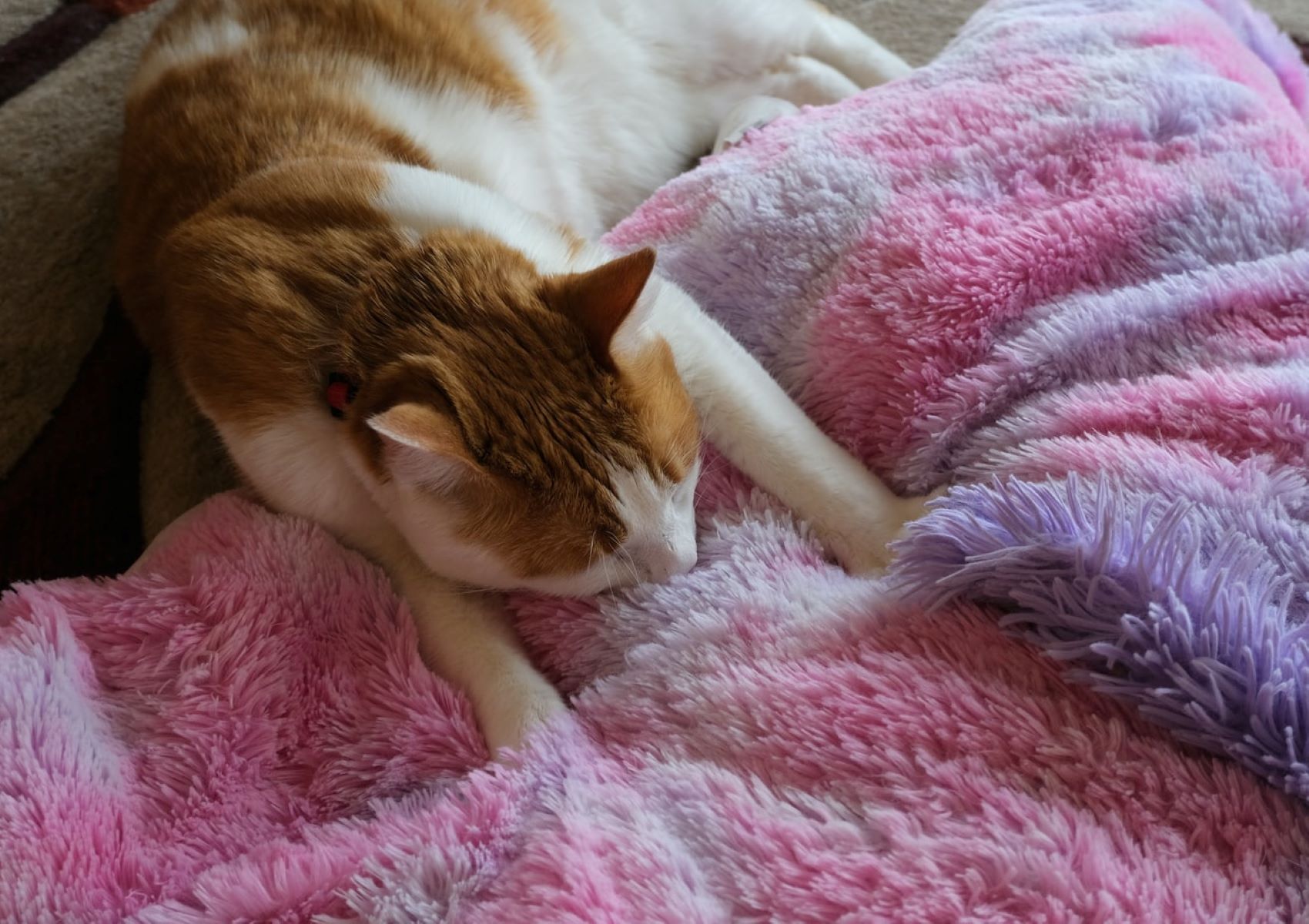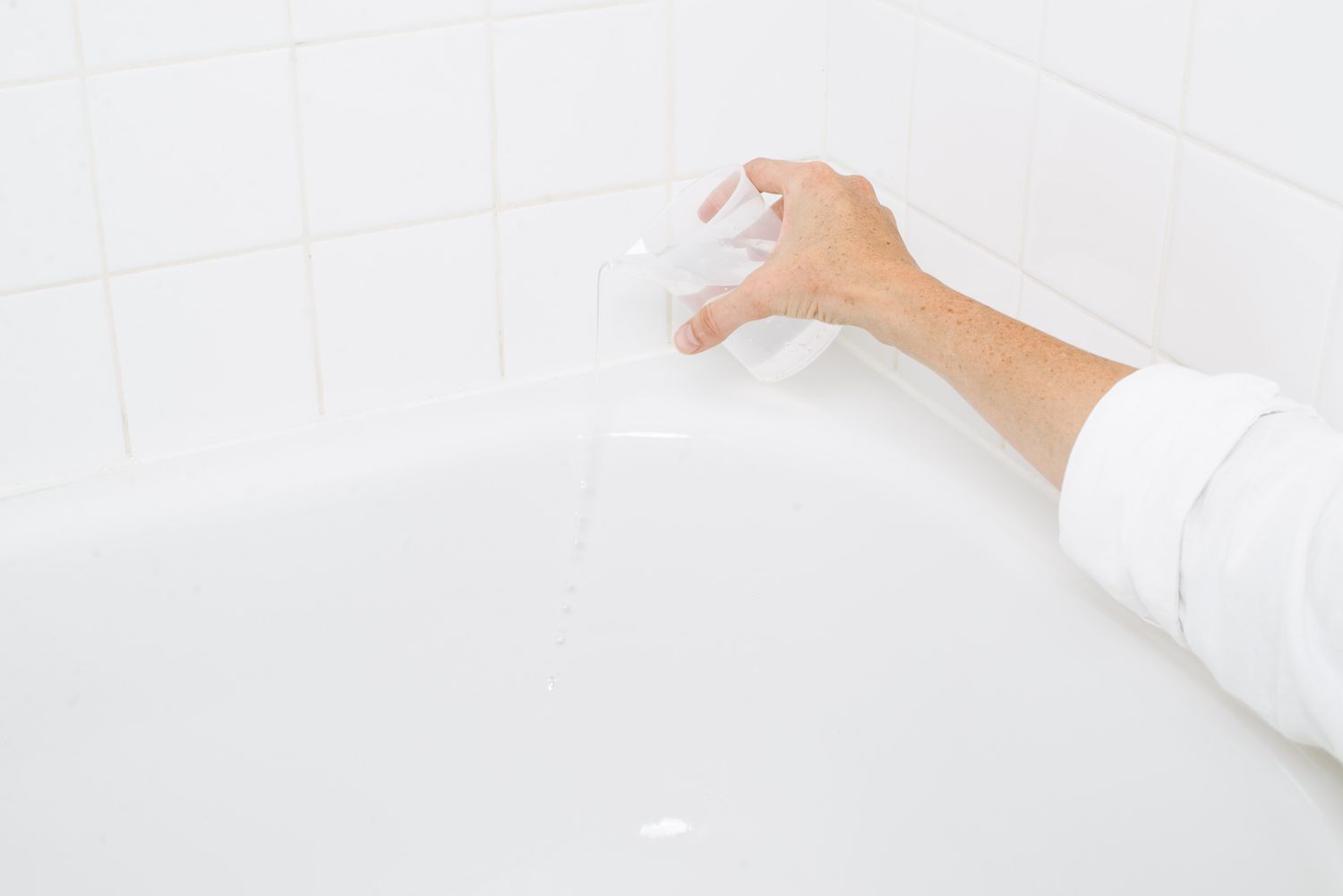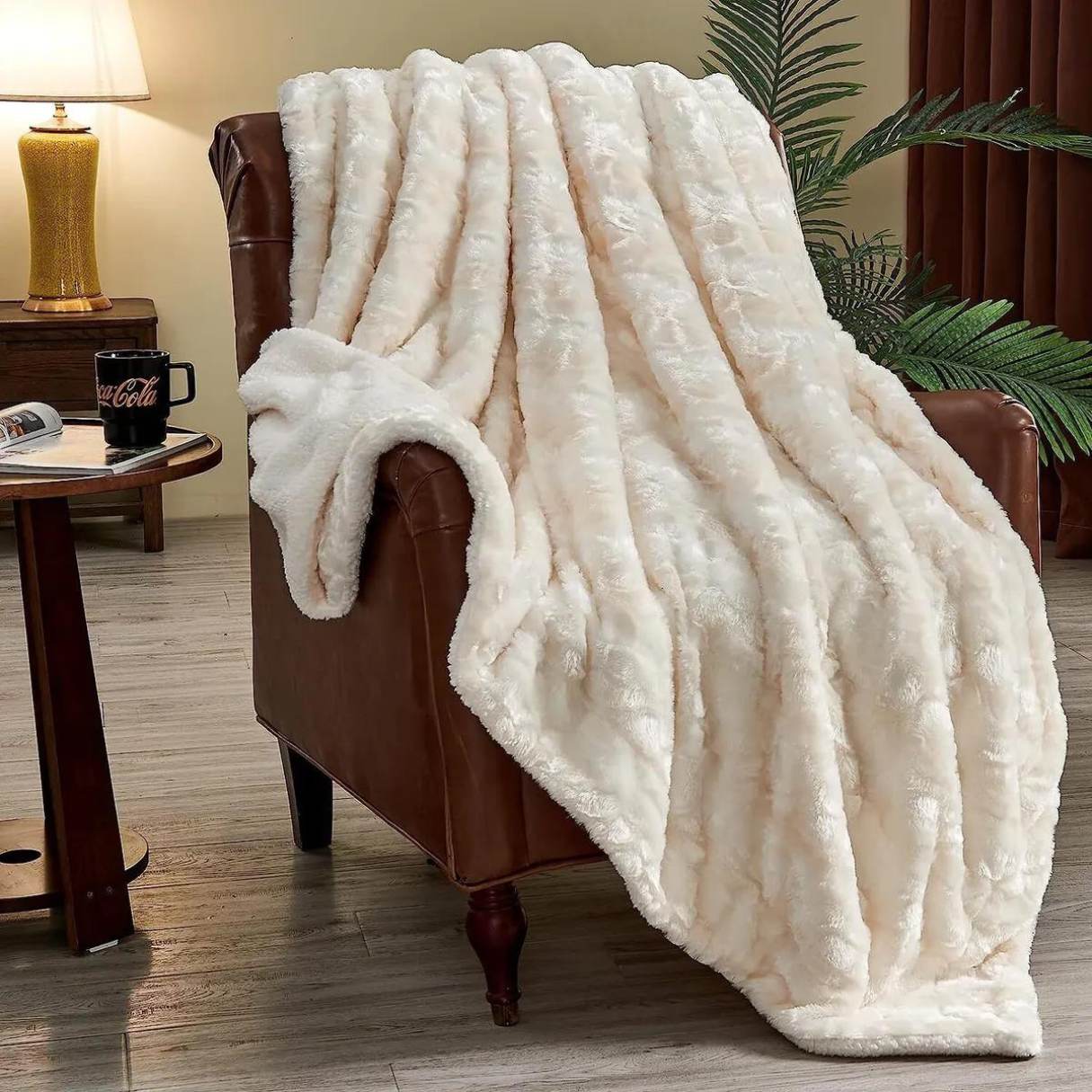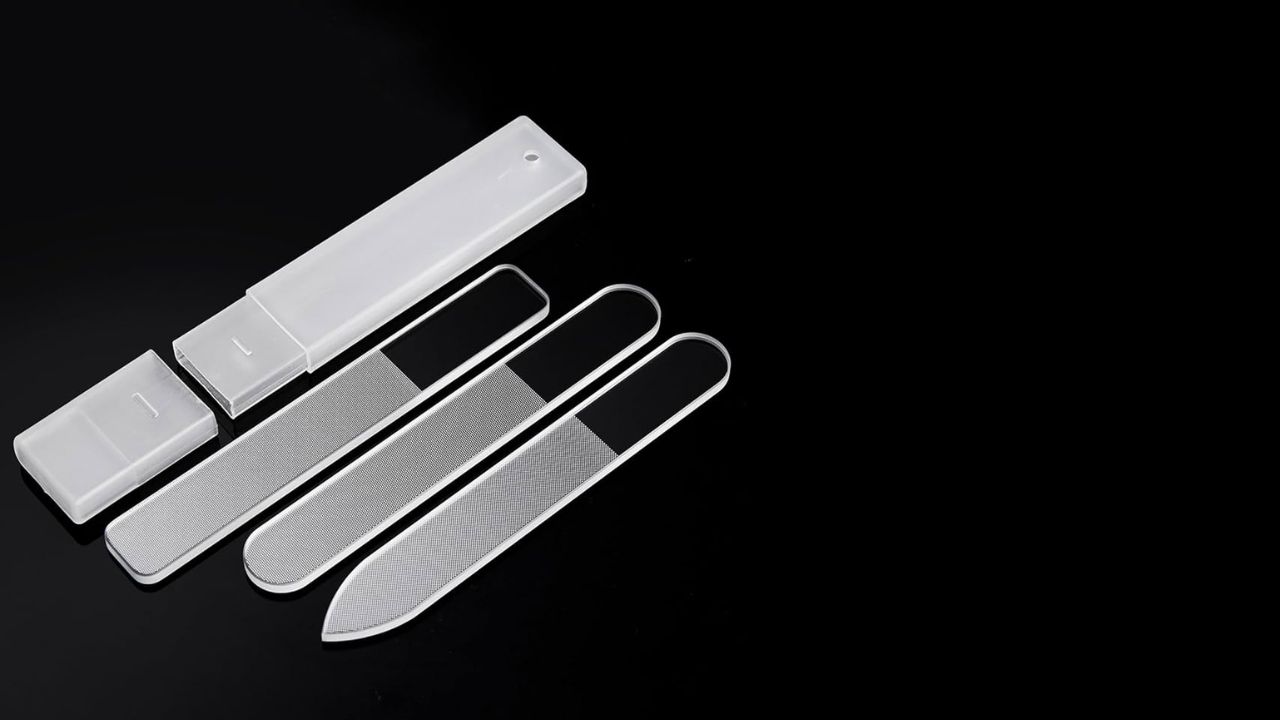

Articles
How To Make A Blanket Soft Again
Modified: February 21, 2024
Discover articles on how to make a blanket soft again. Learn easy tips and tricks for restoring the cozy texture of your favorite blanket.
(Many of the links in this article redirect to a specific reviewed product. Your purchase of these products through affiliate links helps to generate commission for Storables.com, at no extra cost. Learn more)
Introduction
There’s nothing quite like the comforting feeling of wrapping yourself up in a soft and cozy blanket. However, over time, blankets can lose their softness and become rough and uncomfortable to the touch. If you find yourself longing for the days when your blanket was as soft as a cloud, don’t despair. With a few simple tips and tricks, you can restore your blanket to its former glory and make it soft again.
In this article, we will explore various methods to revive the softness of your blanket. From assessing the condition of the blanket to washing it properly and utilizing different techniques to make it soft again, we’ve got you covered. So, without further ado, let’s jump right in and learn how to transform your rough blanket into a luxurious and snuggly haven.
Key Takeaways:
- Revive your rough blanket by assessing its condition, washing with care, and using fabric softener or dryer sheets. Brushing and applying vinegar can also restore softness. Avoid common mistakes for effective results.
- Don’t give up on your rough blanket! With gentle washing, fabric softener, and careful maintenance, you can bring back its softness and enjoy cozy comfort once again. Avoid heat and harsh detergents for best results.
Read more: How To Make A Sherpa Blanket Soft Again
Assessing the Condition of the Blanket
Before jumping into the process of making your blanket soft again, it’s important to assess its current condition. This step will help you determine the best course of action and avoid any potential damage to the fabric. Here are a few key factors to consider:
- Fabric Type: Different types of fabrics require different care methods. Take note of the material your blanket is made of, such as cotton, fleece, wool, or acrylic.
- Damage or Wear: Check for any visible signs of damage, such as holes, tears, or frayed edges. If your blanket is severely damaged, it may be best to consider repairing or replacing it.
- Stains or Odors: Assess if there are any stubborn stains or unpleasant odors present on your blanket. This will help determine if additional cleaning methods or treatments are necessary.
By closely examining these factors, you’ll be able to proceed with the appropriate steps to rejuvenate your blanket and bring back its softness.
Washing the Blanket
One of the first steps in making your blanket soft again is to give it a thorough wash. Washing your blanket will help remove dirt, oils, and any build-up that may be causing it to feel rough. Here’s a step-by-step guide on how to wash your blanket:
- Read the Care Instructions: Before washing, always check the care label attached to your blanket. It will provide specific instructions on how to properly clean the fabric.
- Pre-treat Stains: If your blanket has any noticeable stains, pre-treat them by gently dabbing the affected area with a stain remover or a mixture of mild detergent and water.
- Choose the Right Washing Machine Settings: Set your washing machine to a gentle or delicate cycle with cool or lukewarm water. Avoid using hot water as it can cause some fabrics to shrink or lose their softness.
- Use a Mild Detergent: Opt for a gentle detergent that is suitable for the fabric type of your blanket. Avoid using harsh detergents or bleach as they can be abrasive and tough on the fibers.
- Load the Blanket Carefully: Place the blanket into the washing machine, making sure not to overload it. If you have a large blanket, it may be best to wash it on its own to prevent tangling and promote even cleaning.
- Wash on a Gentle Cycle: Start the washing machine and let it run through the gentle cycle. This will allow the detergent to penetrate the fabric and remove any dirt or residue.
- Rinse and Spin: Once the cycle is complete, proceed with an additional rinse and spin cycle to ensure all the detergent is thoroughly rinsed out of the blanket.
- Drying the Blanket: Gently remove the blanket from the washing machine and, depending on the care instructions, either air dry it or tumble dry on low heat. Avoid high heat settings as they can damage the fibers and lead to shrinkage.
By following these steps, you will give your blanket a fresh start and eliminate any factors that may be contributing to its rough texture.
Adding Fabric Softener
Fabric softener is a great tool for enhancing the softness and freshness of your blanket. It works by coating the fibers with a thin layer of lubrication, making them feel smoother and more comfortable against the skin. Here’s how you can add fabric softener to your blanket:
- Choose a Fabric Softener: Select a fabric softener that is compatible with your blanket’s fabric type. There are liquid fabric softeners, dryer sheets, or even homemade alternatives that you can use.
- Read the Directions: Follow the instructions on the fabric softener packaging to determine the recommended amount to use based on the load size and water hardness. Using too much fabric softener can leave a residue on your blanket, so be mindful of the dosage.
- Add Fabric Softener: If you’re using a liquid fabric softener, add it to the designated fabric softener compartment in your washing machine. If you’re using dryer sheets, simply place them in the dryer along with the blanket.
- Run a Rinse Cycle: If your washing machine has a rinse cycle with a fabric softener dispenser, make sure to select that option. It will release the fabric softener during the rinse cycle, ensuring that it is evenly distributed throughout the blanket.
- Air or Machine Dry: After rinsing, dry your blanket according to the care instructions. Whether you choose to air dry or machine dry, the remaining fabric softener will continue working to make your blanket soft and cozy.
Adding fabric softener to your blanket will help restore its softness and give it a pleasant scent. However, keep in mind that some people may be sensitive to the fragrance or ingredients in fabric softeners, so use it sparingly and consider hypoallergenic options if necessary.
Using Dryer Sheets
Dryer sheets are another effective way to make your blanket soft and reduce static cling. These sheets are coated with a layer of softening agents that are released onto your fabrics during the drying cycle. Here’s how you can use dryer sheets to achieve a softer blanket:
- Select the Right Dryer Sheets: Choose dryer sheets that are suitable for your blanket and compatible with your dryer. Look for options that are specifically designed for softening and freshening laundry.
- Load the Dryer: Once your blanket is in the dryer, add one or two dryer sheets on top of the load. Depending on your preference and the size of the load, you can also cut the dryer sheet in half to maximize its benefits.
- Start the Drying Cycle: Set the dryer to a low or medium heat setting, depending on the fabric type of your blanket. If you’re concerned about potential damage or shrinkage, opt for a no-heat or air-dry setting.
- Allow the Dryer Sheets to Work: As the dryer tumbles, the dryer sheets will release their softening agents, which will coat the fibers of your blanket and reduce static electricity. This process will leave your blanket feeling soft and smooth.
- Remove the Dryer Sheets: Once the drying cycle is complete, remove the dryer sheets from the laundry load. Dispose of them properly or save them for future use.
Using dryer sheets not only helps soften your blanket but also imparts a pleasant scent that can enhance your overall experience. However, keep in mind that some dryer sheets may contain chemicals that could irritate sensitive skin or trigger allergies. If you have any concerns, consider using fragrance-free or hypoallergenic dryer sheets.
To make a blanket soft again, try washing it with a gentle detergent and adding a cup of white vinegar to the rinse cycle. Then, tumble dry on low heat with a couple of tennis balls to fluff it up.
Read more: How To Make My Carpet Soft Again
Applying Vinegar
Vinegar is a natural and cost-effective solution for softening your blanket. It helps remove residue, odors, and build-up that can contribute to a rough texture. Here’s how you can use vinegar to make your blanket soft again:
- Prepare a Vinegar Solution: Mix equal parts of white vinegar and water in a spray bottle or a basin. For larger blankets, you can adjust the proportions accordingly.
- Spray or Soak: If your blanket is small enough to fit in a basin or sink, soak it in the vinegar solution for about 30 minutes. If it’s too large, lightly spray the diluted vinegar solution over the entire surface of the blanket.
- Gently Massage the Blanket: After soaking or spraying, gently massage the vinegar solution into the fibers of the blanket. Pay extra attention to any particularly rough or heavily soiled areas.
- Rinse Thoroughly: Once you’ve massaged the vinegar into the blanket, rinse it thoroughly with cold water. Make sure to remove all traces of the vinegar solution.
- Dry the Blanket: Dry your blanket according to the care instructions, either by air drying or using a dryer. The vinegar treatment will help remove any residue and leave your blanket feeling soft, fresh, and free of any unpleasant odors.
Vinegar is a safe and eco-friendly alternative to chemical softeners. It works by naturally breaking down minerals and residues that can make your blanket stiff and rough. However, bear in mind that vinegar has a distinct smell that can linger temporarily. The odor will dissipate as the blanket dries completely.
Brushing the Blanket
Brushing your blanket is an effective technique to restore its softness and remove any trapped fibers or lint. This method works particularly well for wool or fleece blankets. Here’s how you can brush your blanket to make it soft again:
- Choose a Soft Bristle Brush: Select a brush with soft bristles that won’t damage or pull on the fibers of your blanket. A brush with natural bristles or a lint brush designed for fabrics is ideal.
- Lay the Blanket Flat: Place your blanket on a clean, flat surface. This will make it easier to brush and ensure that you cover the entire surface evenly.
- Start at One Corner: Begin brushing your blanket from one corner, working your way across the surface. Use gentle, sweeping motions to remove any lint or loose fibers.
- Pay Attention to Troublesome Areas: Focus on areas that are particularly rough or have excessive lint build-up. Spend a little extra time brushing these areas to help loosen the fibers and restore softness.
- Brush in Different Directions: For an effective brush, change the direction of your strokes occasionally. This will help dislodge any trapped debris and ensure thorough softening.
- Shake off Excess Lint: Once you’ve finished brushing the entire blanket, give it a gentle shake to remove any loosened lint or fibers. You can also use a lint roller or vacuum with a brush attachment to remove any residual lint.
Brushing your blanket not only helps make it soft and cozy but also enhances its appearance by giving it a like-new finish. Remember to brush your blanket regularly to prevent the build-up of lint or trapped fibers, ensuring that it stays soft and inviting for years to come.
Using a Fabric Shaver
If your blanket is plagued with stubborn pilling or excessive lint, using a fabric shaver can be an effective solution to restore its softness and smooth texture. A fabric shaver, also known as a lint remover, gently removes pills and fuzz from the surface of the fabric. Here’s how you can use a fabric shaver to make your blanket soft again:
- Prepare the Blanket: Ensure that your blanket is clean and dry before using a fabric shaver. Remove any loose debris or lint by lightly brushing or shaking the blanket.
- Test on an Inconspicuous Area: Before using the fabric shaver on the entire blanket, test it on a small, inconspicuous area. This will allow you to assess the shaver’s effectiveness and ensure it doesn’t cause any damage or snag the fabric.
- Place the Blanket on a Flat Surface: Lay the blanket on a smooth, flat surface like a table. This will provide stability and make it easier to maneuver the fabric shaver.
- Gently Glide the Fabric Shaver: Turn on the fabric shaver and run it over the surface of the blanket using light, even pressure. Move the shaver in one direction to remove the pills and fuzz effectively.
- Empty the Lint Collector: Periodically check the lint collector attached to the fabric shaver and empty it as needed to maintain its effectiveness. Removing the collected lint will prevent clogging and allow the shaver to continue removing pills smoothly.
- Continue Shaving as Needed: Continue gliding the fabric shaver over the blanket, focusing on areas with a high concentration of pills or fuzz. Take your time to ensure thorough removal without damaging the fabric.
- Inspect the Blanket: Once you’ve finished using the fabric shaver, inspect the blanket to see if any pills or lint remain. If necessary, repeat the process in areas that require further attention.
Using a fabric shaver can significantly improve the softness and appearance of your blanket by removing unsightly pills and fuzz. However, it’s important to use the shaver with care and not apply excessive pressure to avoid damaging the fabric.
Avoiding Common Mistakes
When trying to make your blanket soft again, it’s important to be mindful of certain common mistakes that could potentially damage the fabric or hinder your efforts. Here are some mistakes to avoid:
- Using Excessive Heat: High heat settings can shrink or damage certain fabrics, so always follow the care instructions and opt for low or medium heat when drying your blanket.
- Overloading the Washing Machine: Overstuffing the washing machine can prevent proper cleaning and rinsing, leading to less effective results. Give your blanket enough room to move freely in the machine.
- Using Harsh Detergents: Harsh detergents can be abrasive and strip away the softness of the fabric. Use gentle detergents that are suitable for your specific blanket material.
- Skipping Pre-treatment: Stubborn stains should be pre-treated before washing to increase the chances of removing them completely. Give the stain some extra attention before tossing the blanket into the washing machine.
- Not Checking the Care Label: Each blanket has specific care instructions that should be followed. Pay attention to the care label to ensure you’re using the correct washing and drying methods.
- Using Rough Brushes: When brushing your blanket, choose brushes with soft bristles to avoid damaging the fibers. Rough brushes can snag the fabric and cause it to become frayed or worn out.
- Skipping Regular Maintenance: Taking care of your blanket on an ongoing basis is crucial to maintaining its softness. Regularly washing, brushing, and storing it properly will help keep it in optimal condition.
By avoiding these common mistakes, you can ensure that your efforts to make your blanket soft again are effective and do not cause any unnecessary damage. Treat your blanket with care and follow the recommended methods to enjoy a soft and cozy experience.
Read more: How To Make Sherpa Blanket Fluffy Again
Conclusion
There’s no need to part ways with your once-soft and cozy blanket when it starts feeling rough. With the right techniques and a little TLC, you can revive its softness and enjoy its comfort once again. Whether your blanket is made of cotton, fleece, wool, or acrylic, there are a variety of methods you can employ to make it soft again.
Start by assessing the condition of your blanket, checking for any damage, stains, or odors that need special attention. Washing your blanket with a gentle detergent and the appropriate settings will help remove dirt and build-up. Adding fabric softener or using dryer sheets can enhance the softness and impart a pleasant fragrance. Vinegar can be a natural way to refresh and soften the fabric.
For blankets that have become rough or pilled, brushing them with a soft bristle brush or using a fabric shaver can help restore their smooth texture. By avoiding common mistakes like using excessive heat, harsh detergents, or inadequate rinsing, you can prevent damage to your blanket and ensure the softness lasts.
Remember to always refer to the care instructions provided by the manufacturer, as different fabrics require different care methods. Regular maintenance, including washing, brushing, and proper storage, will help keep your blanket soft and cozy for years to come.
So, if you find yourself longing for the softness of your blanket of yesteryears, don’t despair. Follow these tips and techniques, and soon enough, you’ll be snuggling up in a delightfully soft and comforting blanket once again.
Frequently Asked Questions about How To Make A Blanket Soft Again
Was this page helpful?
At Storables.com, we guarantee accurate and reliable information. Our content, validated by Expert Board Contributors, is crafted following stringent Editorial Policies. We're committed to providing you with well-researched, expert-backed insights for all your informational needs.














0 thoughts on “How To Make A Blanket Soft Again”